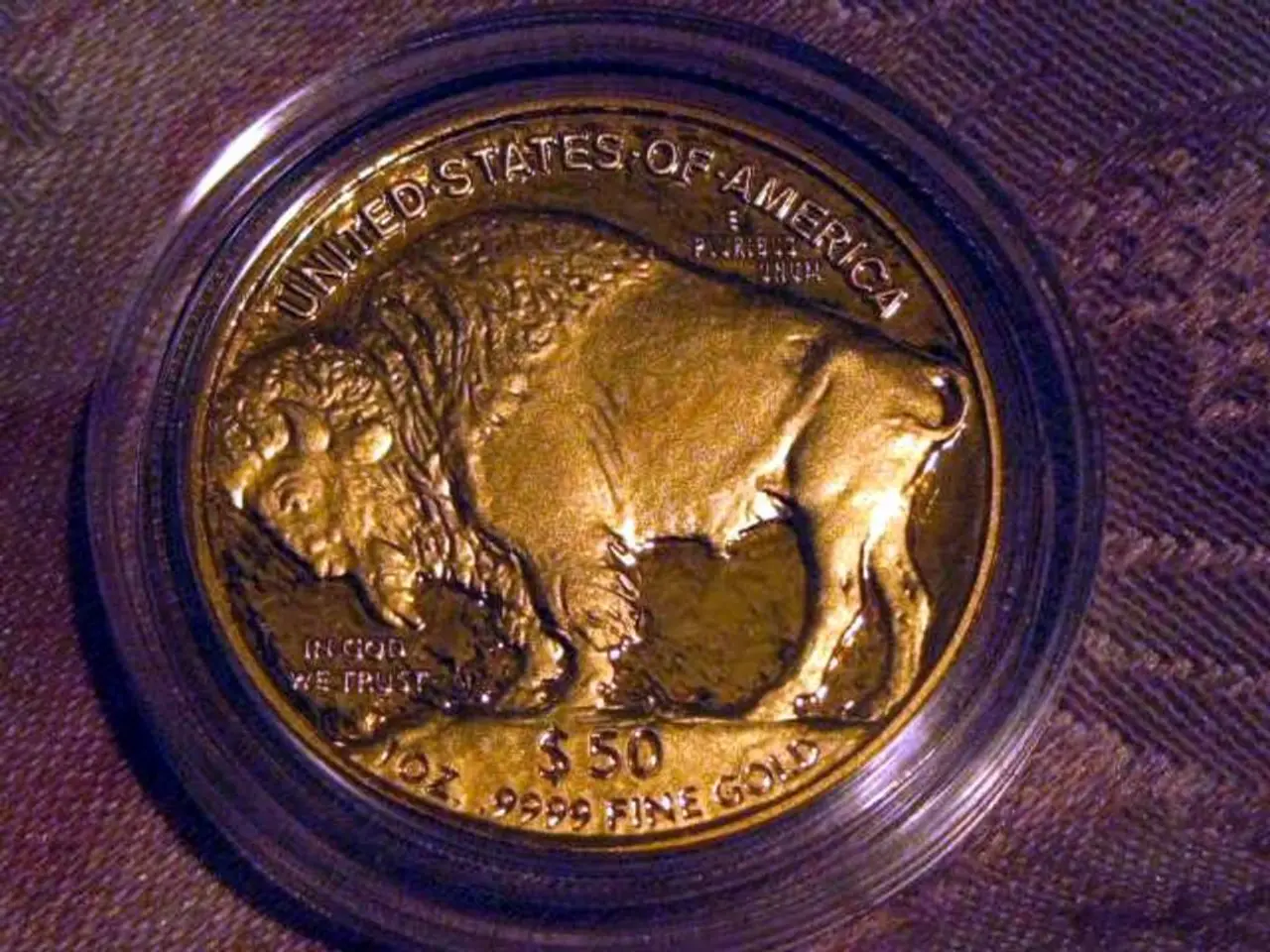Currency Dollar Disappoints, Gold Thrives Amidst Trade Uncertainty
In the economic landscape of mid-2025, the trends and factors influencing the US dollar, euro, and gold prices are significantly shaped by US trade policies, budget deficits, and broader economic sentiment.
### US Dollar (USD)
The USD has experienced some softness recently, influenced by renewed political and trade uncertainties. President Trump's criticism of the Federal Reserve and trade relations, particularly with Japan, have contributed to this volatility. However, improving investor confidence and stable macroeconomic data have reduced demand for the dollar as a safe-haven currency, offering some support to the USD.
### Euro (EUR)
The euro remains relatively firm, trading above 1.1700 against the USD. Strength in the euro relative to the USD tends to push gold prices higher, as a weaker USD generally makes gold more attractive.
### Gold Prices
Gold prices have shown both volatility and strength in 2025. Recently, gold slipped toward around $3,250 per ounce due to improved risk appetite and reduced safe-haven demand. However, gold remains substantially higher year-to-date, up about 25.65%, reflecting continued influence from currency fluctuations and inflation concerns. The strength of the USD versus other currencies like the euro, yen, and Swiss franc directly affects gold prices; as the USD weakens, gold prices tend to rise. Gold is currently experiencing downward pressure due to better investor risk sentiment but is expected to remain elevated through 2025 with forecasts placing gold above $3,200-$3,400 per ounce in coming months.
### Key Factors at Play
- US Trade Policies: Ongoing trade tensions and negotiations impact USD volatility and market sentiment, influencing currency flows and gold demand. - US Budget Deficits: Persistent deficits can weigh on the USD by raising concerns about fiscal sustainability, potentially driving investors toward gold as a hedge. - Risk Sentiment: Improved global economic data and reduced geopolitical tensions have lowered safe-haven demand for gold and the USD recently. - Inflation & Interest Rates: US inflation around 2.35% and a stable 10-year Treasury yield near 4.26% influence both currency strength and gold appeal as an inflation hedge.
### Summary Table
| Asset | Current Trend | Influencing Factors | |---------------|-----------------------------------|--------------------------------------------------------| | US Dollar | Slightly soft, volatile | US trade tensions, Fed criticism, budget deficits, economic data | | Euro | Firm against USD | Positive German economic indicators, EUR/USD strength supports gold | | Gold | High but recently corrected down | USD strength/weakness, inflation concerns, risk sentiment |
In conclusion, US trade policies and budget deficits are key drivers of USD volatility, which in turn affects the euro and gold prices. Gold remains a strong store of value amid uncertainty but is sensitive to shifts in risk appetite and currency strength in mid-2025. The dollar is down and posted a 3-1/3 year low today, with the dollar index (DXY00) down by -0.32%. US May JOLTS job openings unexpectedly rose +374,000 to a 6-month high of 7.769 million. Rising deficits are bearish for the dollar, with the Congressional Budget Office estimating the Republicans' reconciliation bill would add nearly $3.3 trillion to US budget deficits over the next ten years. The June ISM prices paid sub-index rose +0.3 to 69.7. August gold is up +54.10 (+1.64%) and September silver is up +0.408 (+1.13%).
Sports can serve as a distraction for some investors seeking safe-haven assets, such as the US dollar and gold. A major sporting event, like the World Cup or the Super Bowl, might temporarily divert attention away from economic concerns, causing a shift in risk sentiment and gold demand.
Additionally, the recovery of professional sports and the return of spectators after the COVID-19 pandemic could potentially stimulate economic growth and reduce the demand for safe-haven assets, indirectly impacting the US dollar and gold prices.




